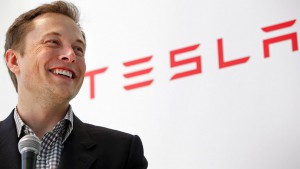Share This
Related Posts
Tags
Tunnel Time?
By Anca Gagiuc on Feb 16, 2017 in News
Late last year, entrepreneur Elon Musk sent out a series of tweets complainin g about the heavy traffic in LA. Can’t argue with him there – Southern California has the country’s worst traffic, according to a study released by the data company Inrix. Musk called being stuck in traffic “soul-destroying.” But he didn’t just whine, he proposed a solution: tunnels.
g about the heavy traffic in LA. Can’t argue with him there – Southern California has the country’s worst traffic, according to a study released by the data company Inrix. Musk called being stuck in traffic “soul-destroying.” But he didn’t just whine, he proposed a solution: tunnels.
At first, it wasn’t clear if this was a billionaire’s joke or if he’s really serious about The Boring Company (suggested tagline: it’s not boring!). But then Musk added “Tunnels” to his Twitter bio, alongside Tesla, SpaceX and OpenAI, and the announced on January 28 that digging has begun.
A team of workers excavated a “test trench” 30 feet wide, 50 feet long and 15 feet deep on the grounds of SpaceX’s Los Angeles headquarters, at Crenshaw Boulevard and 120th Street. So far, Musk calls it the start of an experiment. The “pilot tunnel” will only traverse Crenshaw Boulevard to SpaceX’s employee parking structure, but he made it public that his tunnel ambitions are much bigger.
“We’re just going to figure out what it takes to improve tunneling speed by, I think, somewhere between 500 and 1,000 percent,” he said during a recent Hyperloop design competition at SpaceX. “We have no idea what we’re doing—I want to be clear about that. We’re going to get this machine, take it apart, figure out how to make it go much faster while still being safe and not affecting people on the surface. We’ll see how much progress we can make, but I’m optimistic tunneling can be improved by at least five-fold, maybe 10-fold.”
That’s key to a lot of technologies—road tunnels, train tunnels, Hyperloop tunnels. For those who aren’t familiar, Hyperloop is a space-agey proposed mode of transportation that propels a pod-like vehicle through a near-vacuum tube faster than a plane or bullet train.
In Musk’s thinking, tunnels make sense in alleviating traffic—buildings are 3D, one can move in them both up and down and horizontally, while city roads are 2D.
“[Everyone] wants to go into the building and leave the building at a same time,” he said. “On a 2D road network, that obviously doesn’t work, so you have to go 3D either up or down. And I think probably down.”
In direct messages sent to The Verge via Twitter, Musk said that “we will all be in traffic hell forever” without tunnels, adding “I really do think tunnels are the key to solving urban gridlock. Being stuck in traffic is soul-destroying. Self-driving cars will actually make it worse by making vehicle travel more affordable.”
Reactions to the tunneling project are mixed—amid all the “boring” puns, some favor the idea, while the skeptical ones consider it ridiculous. There are numerous things that raise questions, besides all the necessary approvals entailed by such a project. Musk will need approval from the Los Angeles City Council in order to extend the tunnel to LAX, which is his stated goal. In addition, there’s the cost component of the project, as well as environmental hurdles to overcome.
What do you think, LA drivers? Could tunnels be the answer to perpetual gridlock?
